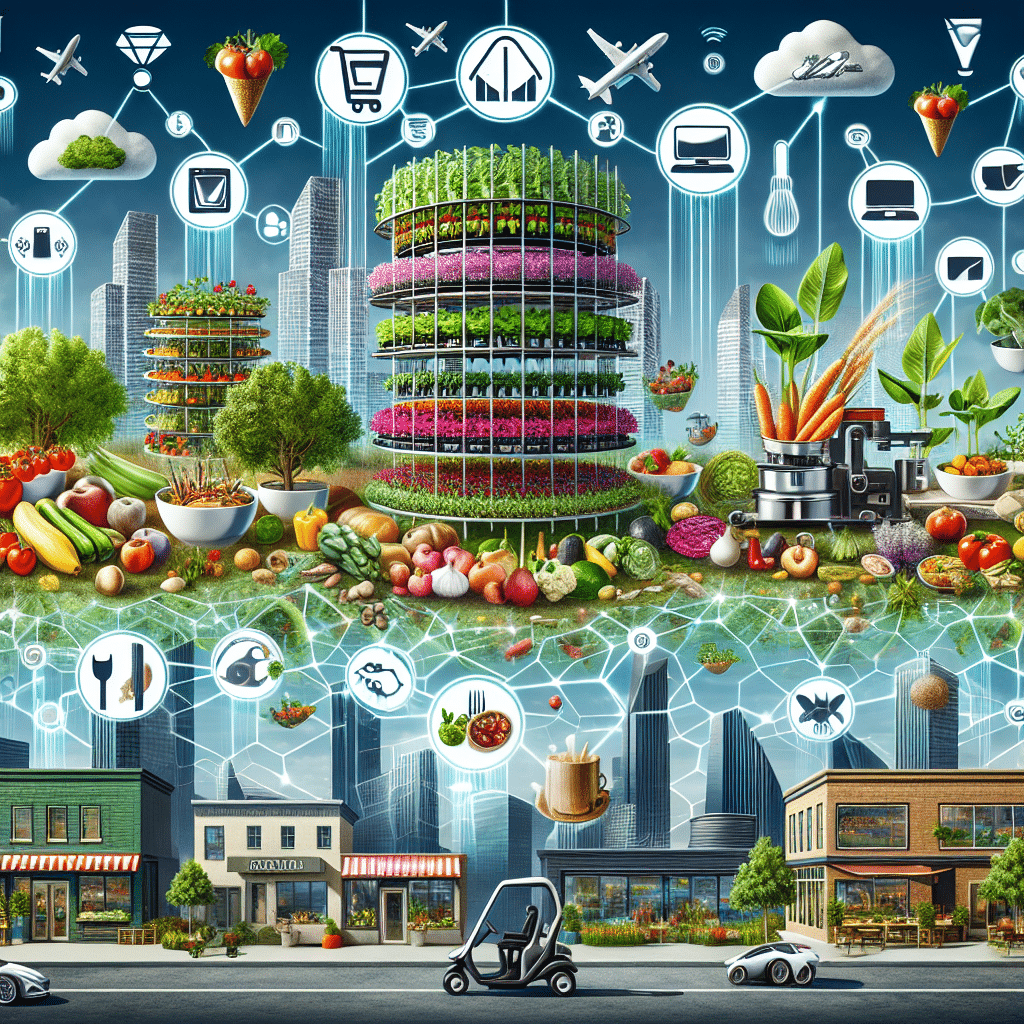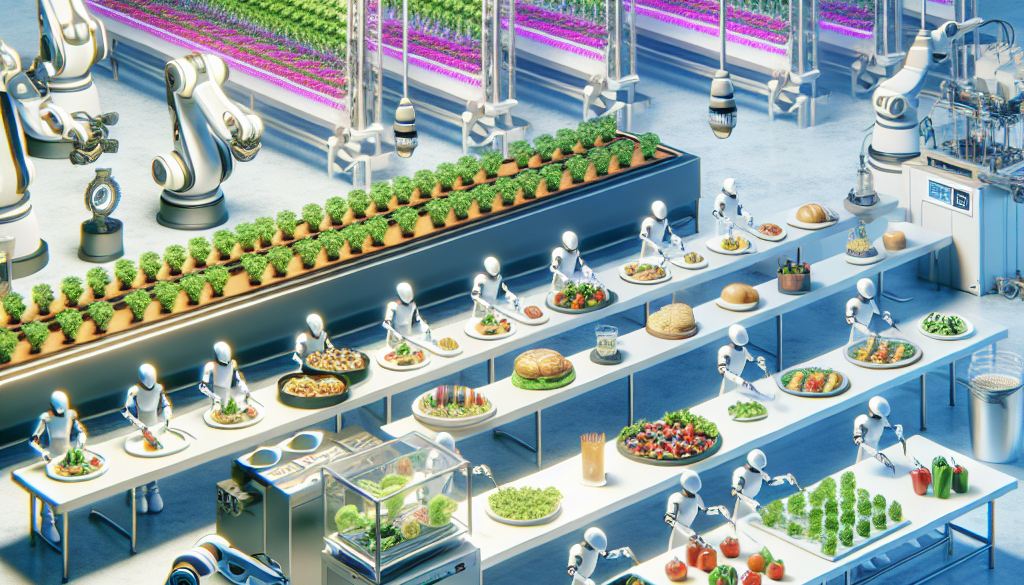What Is In Store For The Food Industry in 2023?
-
Table of Contents
- 2023 Food Industry Outlook: Trends and Predictions
- Technological Innovations in Food Production
- Consumer Trends Shaping the Market
- Supply Chain Resilience and Sustainability
- Regulatory Changes and Food Safety
- Economic Factors and Market Dynamics
- Conclusion: Key Takeaways for the Food Industry in 2023
- ETprotein: Your Partner for High-Quality Protein Products
2023 Food Industry Outlook: Trends and Predictions

The food industry is a dynamic and ever-evolving sector, influenced by a myriad of factors including technological advancements, consumer preferences, and global economic conditions. As we look towards 2023, several key trends are poised to shape the future of food production, distribution, and consumption. This article delves into the anticipated developments and challenges that the food industry is likely to encounter in the coming year.
Technological Innovations in Food Production
Technology continues to play a pivotal role in transforming the food industry. In 2023, we can expect to see further advancements in areas such as:
- Vertical Farming: With the growing need for sustainable agriculture, vertical farming is set to become more prevalent. This method allows for year-round crop production with minimal water usage and land space.
- Lab-grown Foods: Cultured meat and lab-grown dairy products are gaining traction as they offer an ethical and environmentally friendly alternative to traditional animal farming.
- Food Processing Technology: Innovations in food processing, such as High-Pressure Processing (HPP) and pulsed electric fields, are expected to improve food safety and extend shelf life without compromising nutritional value.
Consumer Trends Shaping the Market
Consumer preferences are a driving force behind many changes in the food industry. In 2023, the following trends are likely to influence product development and marketing strategies:
- Health and Wellness: The demand for functional foods, rich in vitamins, minerals, and antioxidants, is on the rise as consumers become more health-conscious.
- Plant-based Products: The plant-based movement continues to grow, with an increasing number of consumers seeking out meat and dairy alternatives for health, ethical, and environmental reasons.
- Transparency and Traceability: Consumers are demanding more information about the origins and production methods of their food, leading to greater transparency in labeling and sourcing.
Supply Chain Resilience and Sustainability
The food industry’s supply chain has faced significant challenges in recent years, from the COVID-19 pandemic to climate change-induced disruptions. In 2023, building a resilient and sustainable supply chain will be a top priority. This includes:
- Local Sourcing: To reduce carbon footprints and mitigate risks associated with global supply chains, companies are increasingly sourcing ingredients locally.
- Waste Reduction: Food waste continues to be a critical issue. Innovations in packaging, inventory management, and distribution are expected to help minimize waste throughout the supply chain.
- Regenerative Agriculture: There is a growing emphasis on farming practices that restore soil health, biodiversity, and carbon sequestration, which can lead to more sustainable food systems.
Regulatory Changes and Food Safety
Regulatory frameworks are constantly evolving to ensure food safety and protect consumer interests. In 2023, we can anticipate:
- Stricter Food Safety Standards: Governments worldwide are likely to implement more rigorous food safety regulations to prevent contamination and foodborne illnesses.
- Labeling Reforms: Changes in labeling requirements may occur to provide clearer nutritional information and allergen warnings to consumers.
- Sustainability Mandates: Regulations aimed at reducing the environmental impact of food production, such as limits on greenhouse gas emissions and water usage, may become more prevalent.
Economic Factors and Market Dynamics
The global economy significantly influences the food industry, affecting everything from commodity prices to consumer spending habits. In 2023, the following economic factors are expected to play a role:
- Inflation and Cost of Living: Rising inflation rates may lead to increased food prices, impacting consumer purchasing power and potentially driving demand for more affordable options.
- Global Trade Policies: Trade agreements and tariffs can affect the availability and cost of imported foods, influencing market dynamics and competition.
- Investment in Food Tech: Venture capital and private equity investments in food technology startups are likely to continue, fueling innovation and growth within the industry.
Conclusion: Key Takeaways for the Food Industry in 2023
In conclusion, the food industry in 2023 is set to be shaped by technological innovation, consumer trends, supply chain resilience, regulatory changes, and economic factors. Companies that adapt to these changes and prioritize sustainability, transparency, and consumer health will be well-positioned for success. As the industry continues to evolve, stakeholders must remain agile and responsive to the shifting landscape.
ETprotein: Your Partner for High-Quality Protein Products
As the food industry navigates these trends, the demand for high-quality protein products is expected to rise. ETprotein is at the forefront of meeting this demand with its extensive range of organic bulk vegan proteins and L-(+)-Ergothioneine (EGT). Whether you’re in the nutraceutical, pharmaceutical, or food and beverage industry, ETprotein’s products offer a neutral taste, non-GMO, allergen-free attributes, and high purity levels, making them an ideal choice for businesses looking to innovate and cater to health-conscious consumers.
About ETprotein:
ETprotein, a reputable protein and L-(+)-Ergothioneine (EGT) Chinese factory manufacturer and supplier, is renowned for producing, stocking, exporting, and delivering the highest quality organic bulk vegan proteins and L-(+)-Ergothioneine. They include Organic rice protein, clear rice protein, pea protein, clear pea protein, watermelon seed protein, pumpkin seed protein, sunflower seed protein, mung bean protein, peanut protein, and L-(+)-Ergothioneine EGT Pharmaceutical grade, L-(+)-Ergothioneine EGT food grade, L-(+)-Ergothioneine EGT cosmetic grade, L-(+)-Ergothioneine EGT reference grade and L-(+)-Ergothioneine EGT standard. Their offerings, characterized by a neutral taste, non-GMO, allergen-free attributes, with L-(+)-Ergothioneine purity over 98%, 99%, cater to a diverse range of industries. They serve nutraceutical, pharmaceutical, cosmeceutical, veterinary, as well as food and beverage finished product distributors, traders, and manufacturers across Europe, USA, Canada, Australia, Thailand, Japan, Korea, Brazil, and Chile, among others.
ETprotein specialization includes exporting and delivering tailor-made protein powder and finished nutritional supplements. Their extensive product range covers sectors like Food and Beverage, Sports Nutrition, Weight Management, Dietary Supplements, Health and Wellness Products, and Infant Formula, ensuring comprehensive solutions to meet all your protein needs.
As a trusted company by leading global food and beverage brands and Fortune 500 companies, ETprotein reinforces China’s reputation in the global arena. For more information or to sample their products, please contact them and email sales(at)ETprotein.com today.












